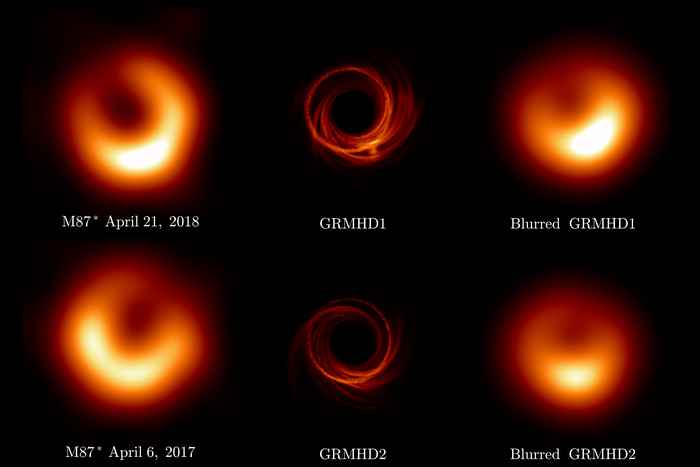M87* gas moves in opposite direction of the black hole rotation
22 January 2025

In recent years, more and more has become clear about the supermassive black hole at the center of star system M87. In 2019, researchers using the Event Horizon Telescope published the first image. In 2020, they showed that the black hole's shadow has been wobbling for years. In 2021, the astronomers imaged the magnetic fields around M87*. And in 2024, the researchers showed that the brightness peak of the ring around the black hole had shifted 30 degrees counterclockwise in one year.
Recently, the researchers have looked at how the gas spirals inward. To achieve their results, they created a database of 120,000 supercomputer-generated images.
“Gas can spiral in the same direction as the black hole or in the opposite direction,” said León Sosapanta Salas, a PhD student at the University of Amsterdam and a member of Professor Sera Markoff's research group. “It now appears that the gas is rotating in the opposite direction.” The team also included Wanga Mulaudzi from the University of Amsterdam and Monika Moscibrodzka from RU Nijmegen.
More results are expected in the near future as astronomers are intensively analyzing data from the 2021 and 2022 observing campaigns.
Publication details
The persistent shadow of the supermassive black hole of M87 II: Model comparisons and theoretical interpretations. By: Event Horizon Telescope Collaboration. In: Astronomy & Astrophysics, 22 March2025 [origineel (open access)]